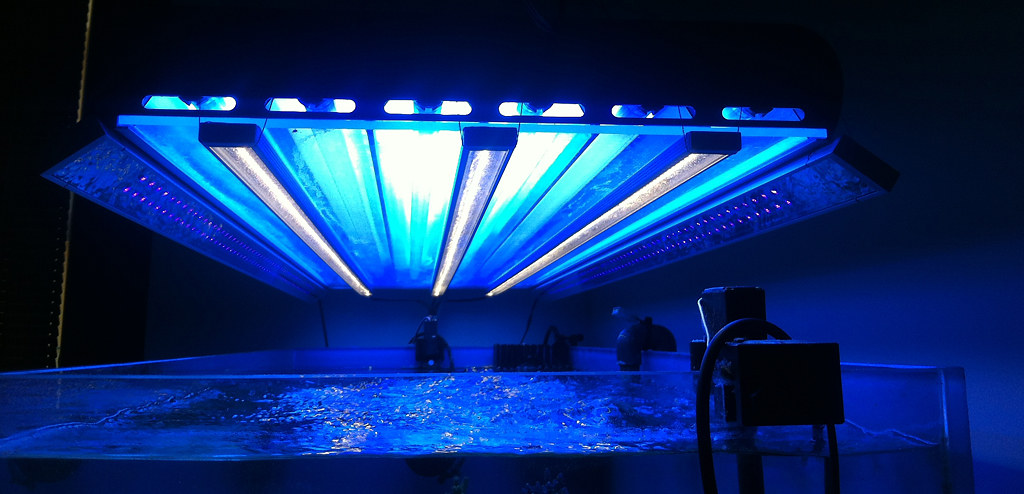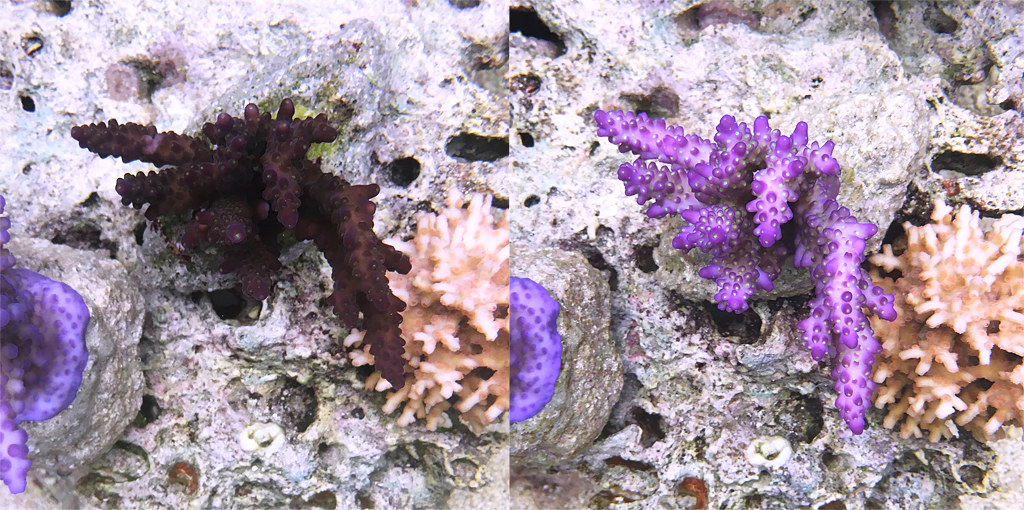szathmary
New member
recent pictures of corals from my tank.
JB, these corals are stunning :spin1:
I wish I could leave in a country where you have access to such SPS corals :headwalls:
recent pictures of corals from my tank.
szathmary
These are my results using the basic principles utilising ICP tests and adding the recommended elements.No AF or Triton
bill
Joe.
I'm responding mainly for discussion purposes.......I'm very glad things are going well for you, if you're happy keep keepin on.:thumbsup:
I hear you and am right with you I just have issues with the accuracy of Tritons tests in regard to Mn and Zn.
How can you track micro metal elements if the tests give inaccurate readings? Have you tried to verify the results your getting as I mentioned in the other forum?
http://enclabs.com/
Are you still getting zero readings from Triton on Mn levels? Most tanks I see get zero
This is where some of my issues lie with dosing some of these micro elements. I'm okay with using Triton to back check hobbyists kits on more major elements for trending.
Big E said:I believe Fe is more important that those micro metals. Glenn doesn't dose or focus on them and he's had a flourishing reef for years with his DSR(Dutch Synthetic Reef) method. He basically uses hobbyist kits and doesn't rely on ICP tests. He has plenty of Acropora in his system.
The link below shows how important Fe is.......the dino can mix/match Mn, Zn and Cu depending how much of each is available, but without good iron levels you're screwed.
http://www.ncbi.nlm.nih.gov/pmc/articles/PMC4744903/
What I'm getting at is someone could be dosing those micro metals maybe even overdosing and still have acros suffering/dying.
Where I'm at right now, I'm not convinced that dosing those minor trace elements is important for most Sps systems.
Big E said:When I look back at the timeline and issues with your system your last test showed zero Fe just before you started the Triton system.
Long story short since your reboot I think your Arid sucks up iron, trace metals at a rapid rate stealing from the acros. So much so that your normal water changes & your calcium reactor couldn't keep up.
Everything points to that.........add Brightwell trace chaeto responds........add Triton elements chaeto responds positively again.
I don't know what Triton's basic elements have in them but I wouldn't be the least bit surprised if there was some Fe in there.
Interestingly enough, a few of the Triton tests Ive seen with fresh mixed IO have zero Fe.
Big E said:In a lot of systems with a good fish load & a calcium reactor the trace elements can be kept at sustainable levels. Or one of the commercial bio dosing systems like Bacto balance that has some trace metals in the mix. Imo, the algae filters take all that away.
This has some table that show how much Mn and Zn are some of the foods we feed our fish.
http://www.reefkeeping.com/issues/2003-04/rhf/feature/
That's why I don't like Triton's basic setup............they push algae filters and if you follow it, of course those elements will be depleted as the algae filter is taking it away.
There many findings and articles that show how many trace elements are taken up by algae.
You aluminum is high, and I assume you have no Marienpure Block?


szathmary
I live in the UK we too suffer from not having access to the stunning corals they have in the USA.I made the decision to try and get corals that i like to fit the tank as i have no idea what a lot are.I mainly buy from 2 LFS ( wild aussie corals but they seem to have dried up ) and a couple who ship within the UK.I have tried corals from Germany and it was disappointing saying that im looking at one seller in germany but i have no room unless i move things on. I am a bit confused with Aquaforest who like to show professional video's and tank threads for promo but no access to corals displayed also i am waiting to see the results in a hobbyist tank displaying those colours (wild new cuts) not tanks supported by them. I will always make room for a nice frag lol as most of us do.I was amazed myself with the colours in the top down shots and wanted to share and how they have benefited from lifting the elements to ICP levels .Hope to keep following your thread thanks
Bill










Great article i did a slightly different method but along the same lines as such. I used Fauna Marin salts and added the 3 bottles of Fauna marin 1, 2, 3 to the solutions which worked well and also did regular Icp tests which then over several tests worked out how much i needed to add each week of trace elements to get to Nsw levels and worked very well. The trace elements i didn't mix all together i did them the following way Strontium Potassium and Boron in one. Lithium Nickel in another and Iodine Manganese and Vanadium and Zinc in another. I added enough to make up for approx 1 months worth at a time in Ro water and dosed accordingly each week. I have switched to using Ati essentials set 1, 2, 3 and see how that goes for the moment as been finding it hard to get hold of Fauna Marin salts lately.
Do you have a reason why you separated the trace elements in such way? E.g if both manganese and zinc are in the form of sulfate (e.g MnSO4 or ZnSO4) which very likely they are then they can be mixed I think.
